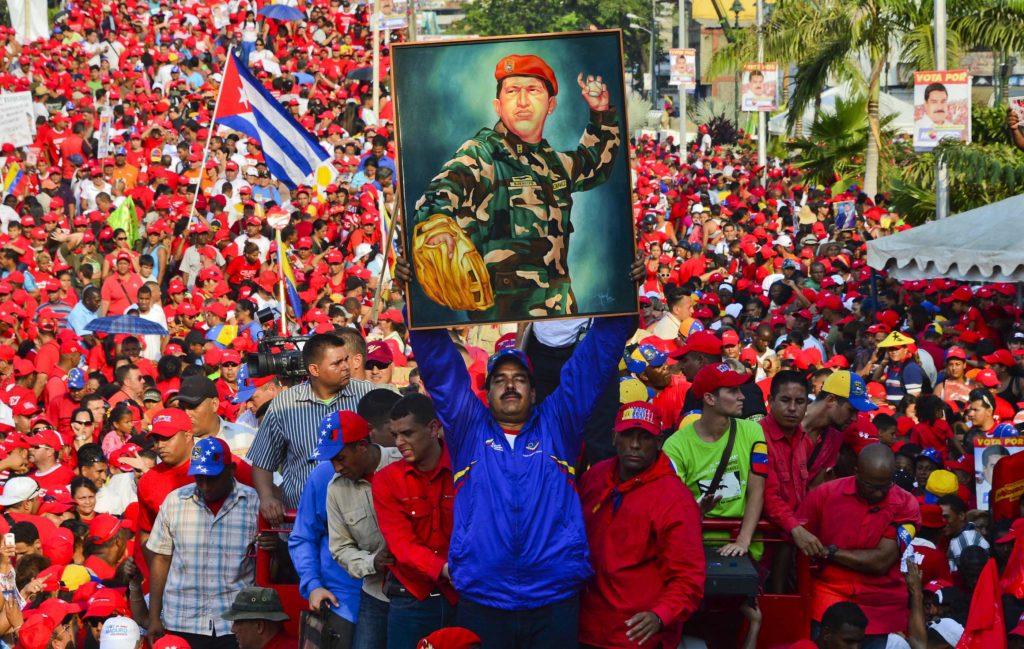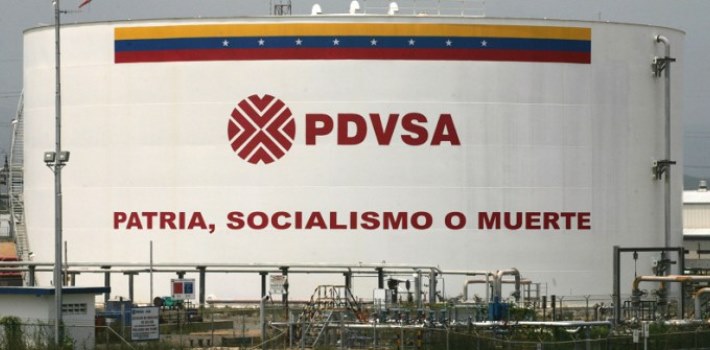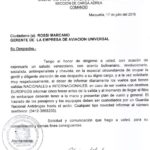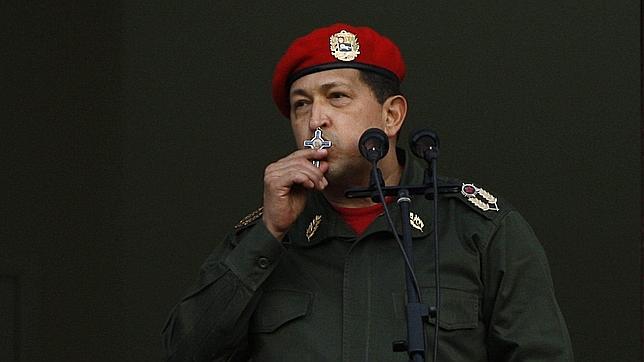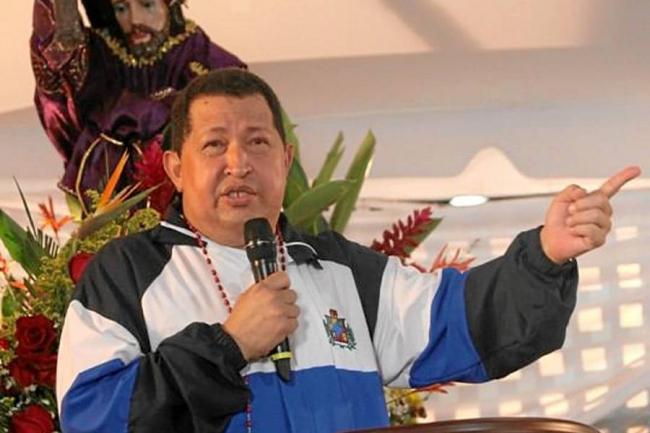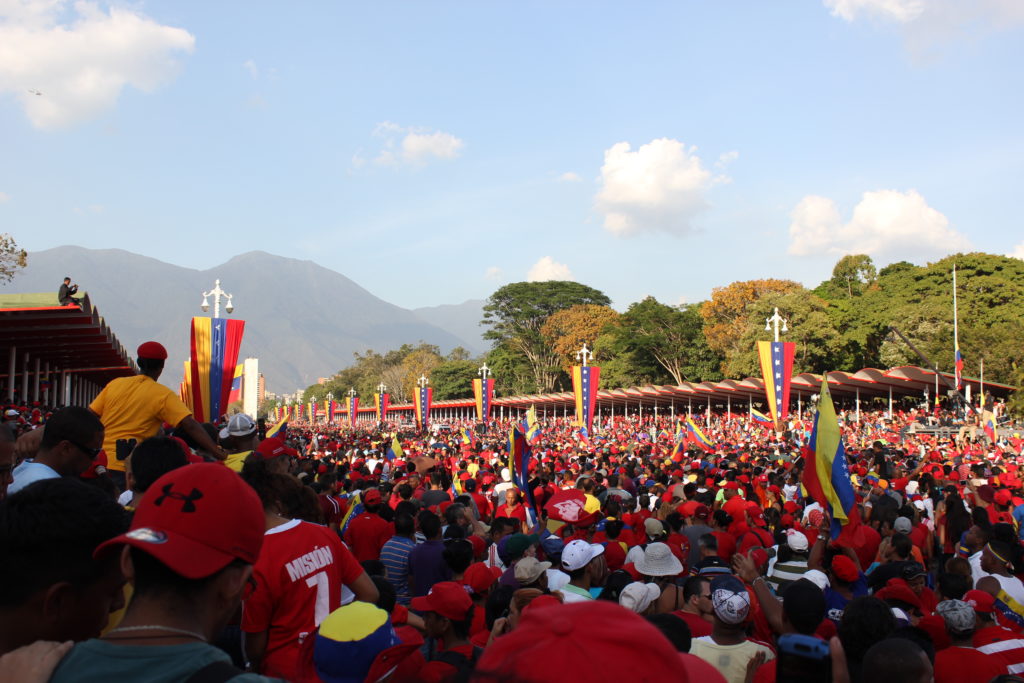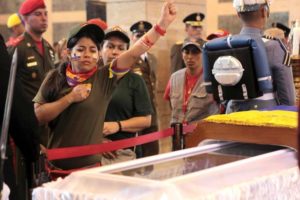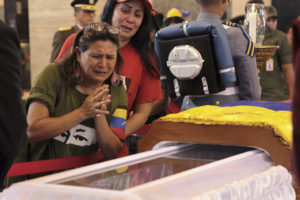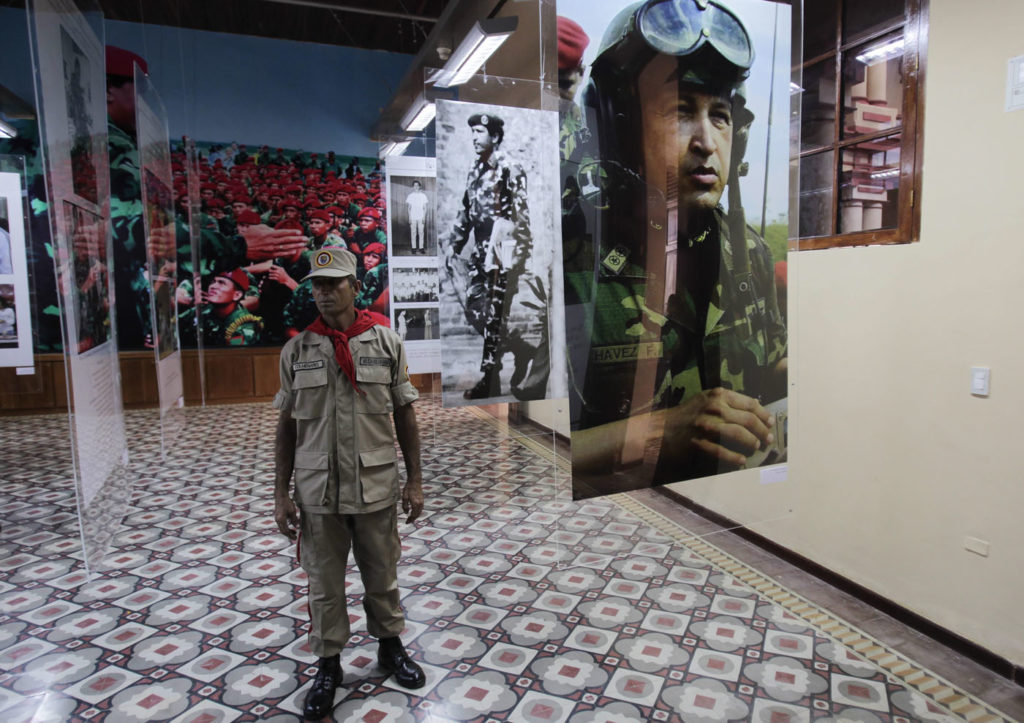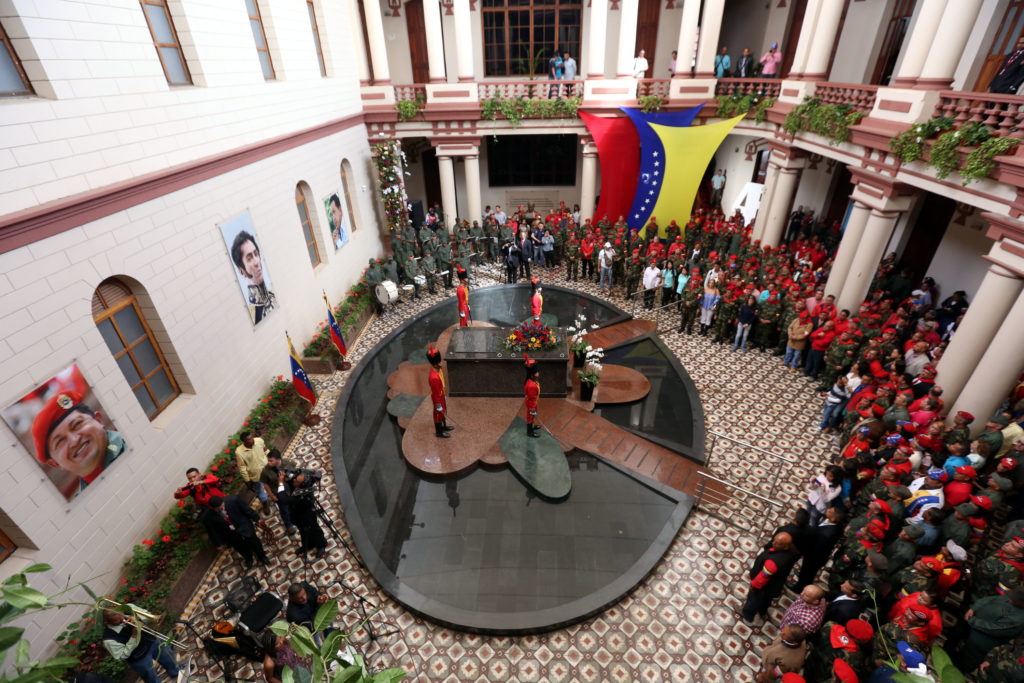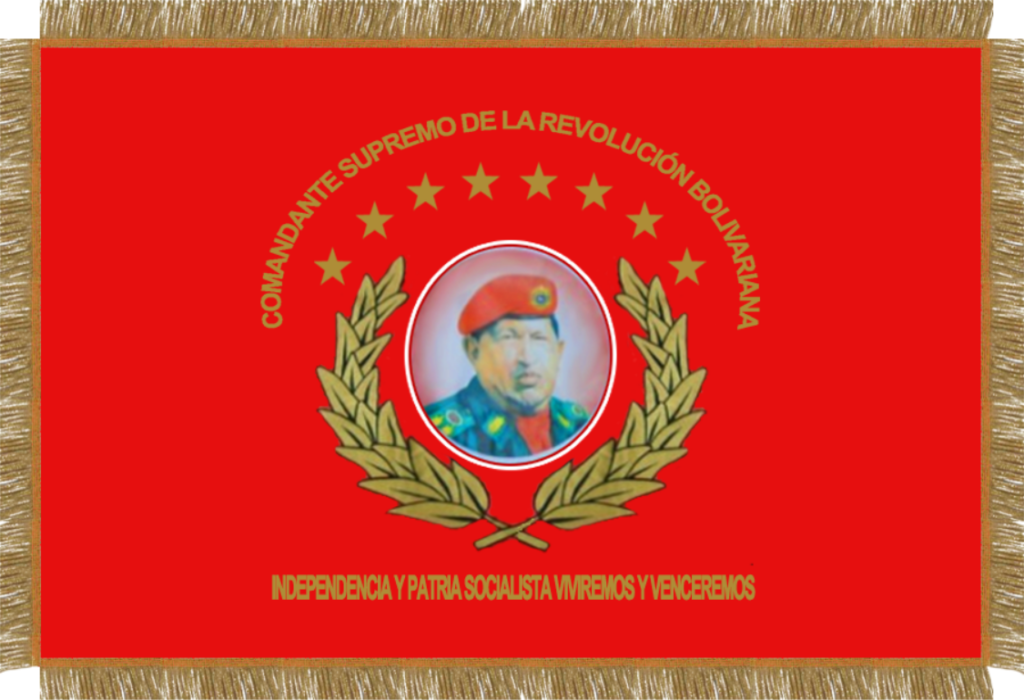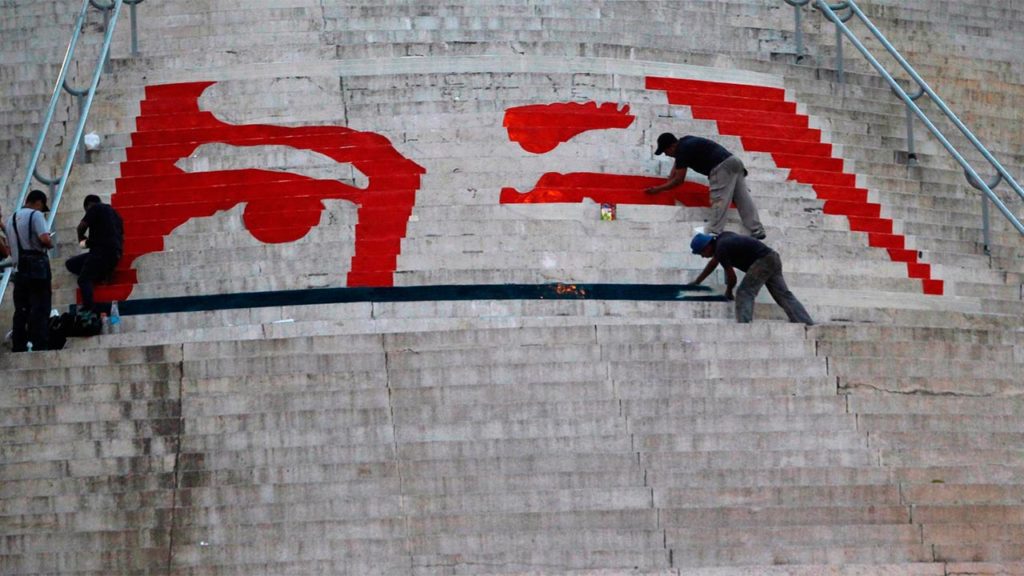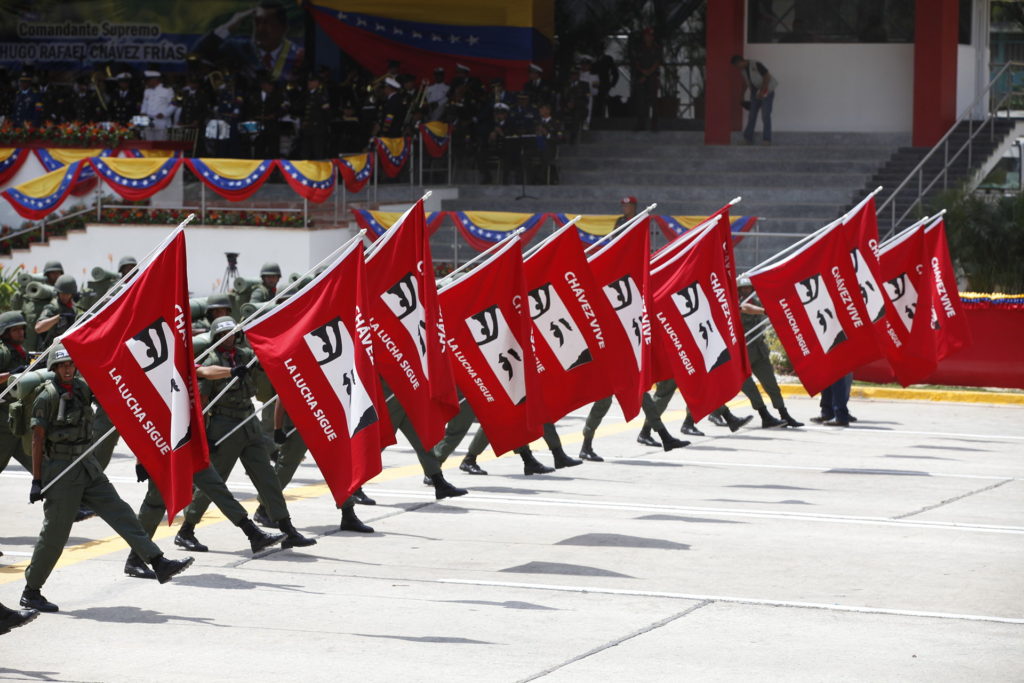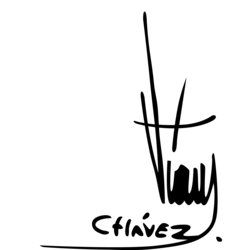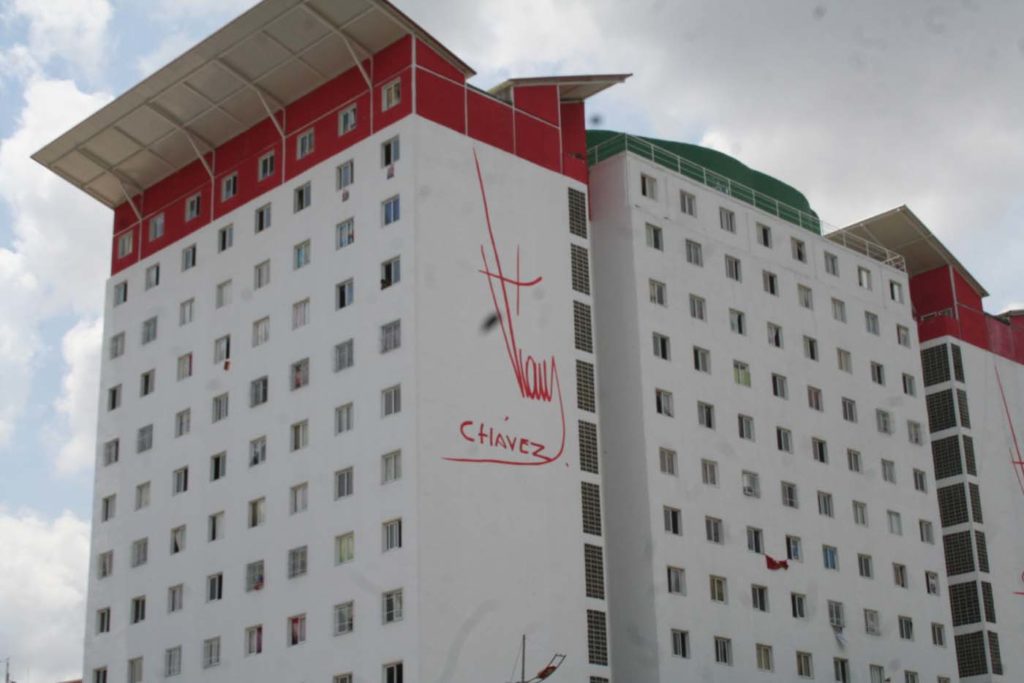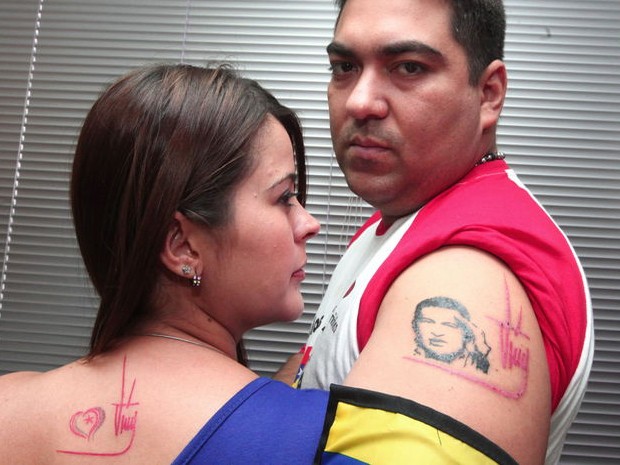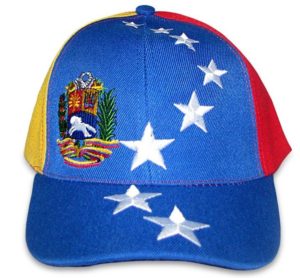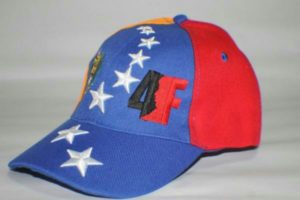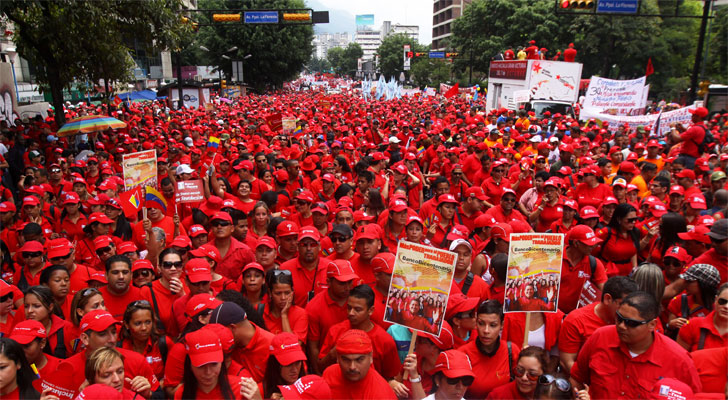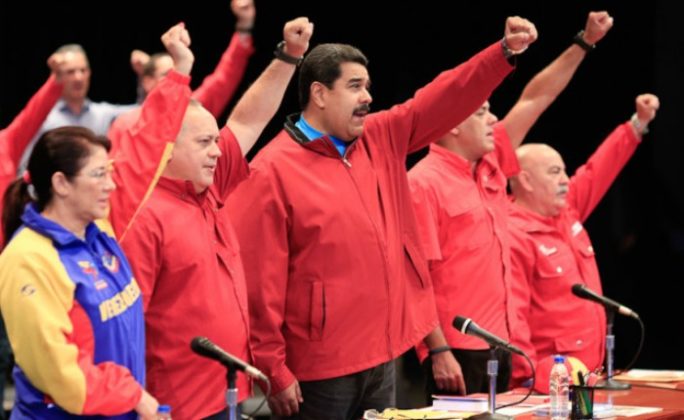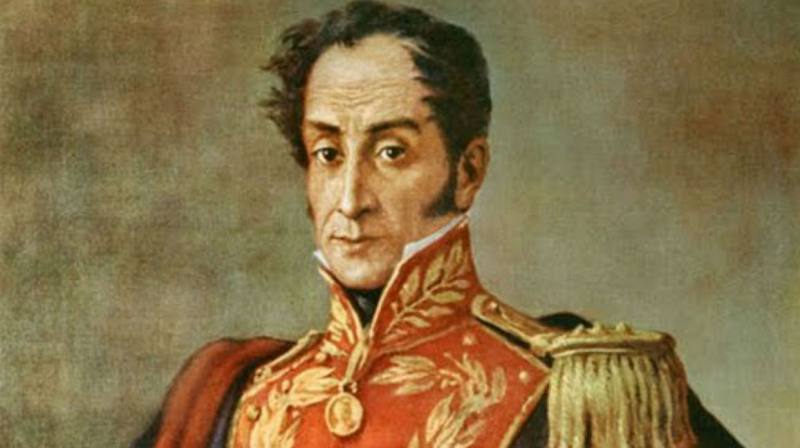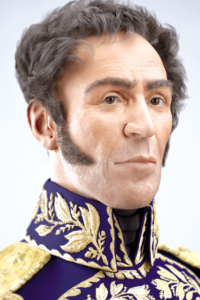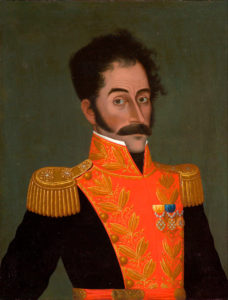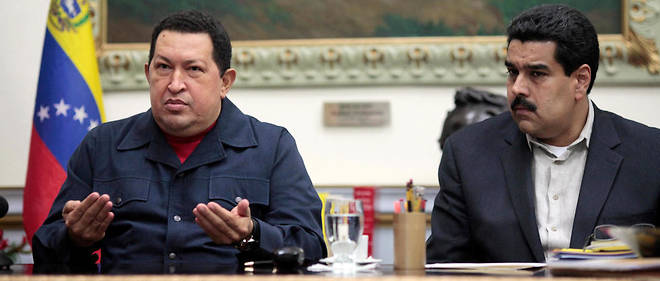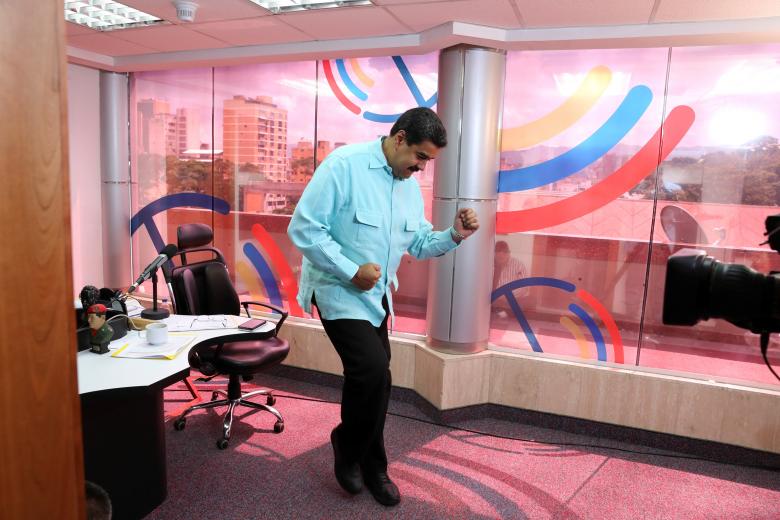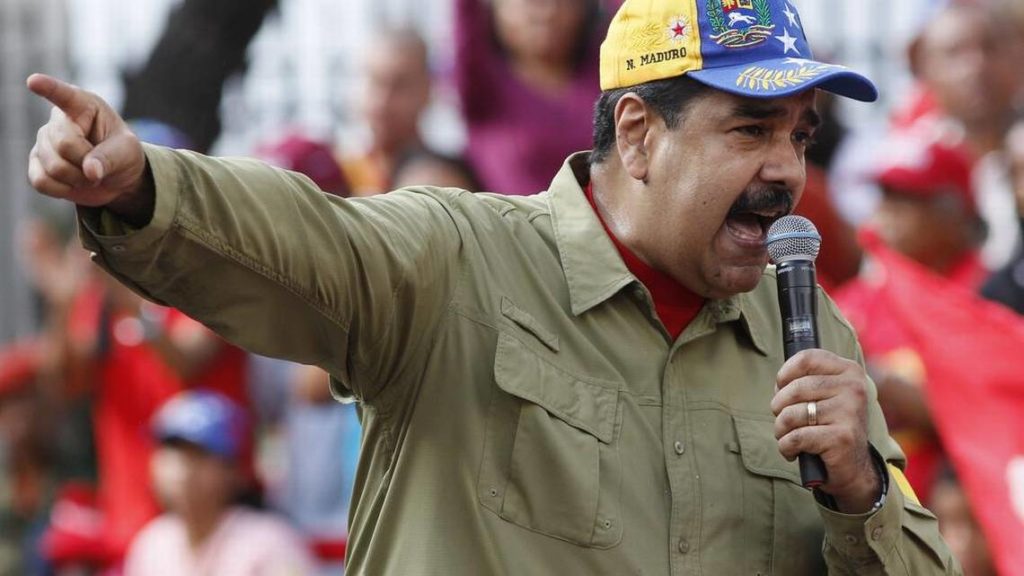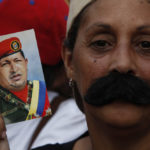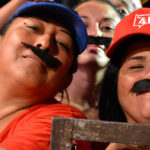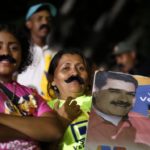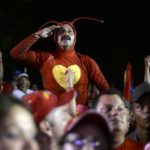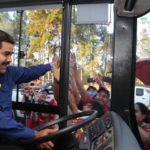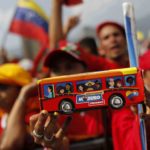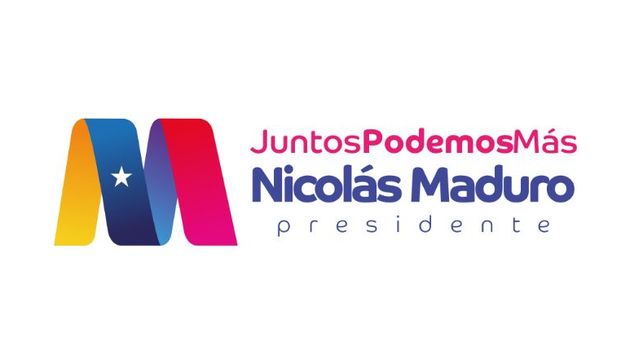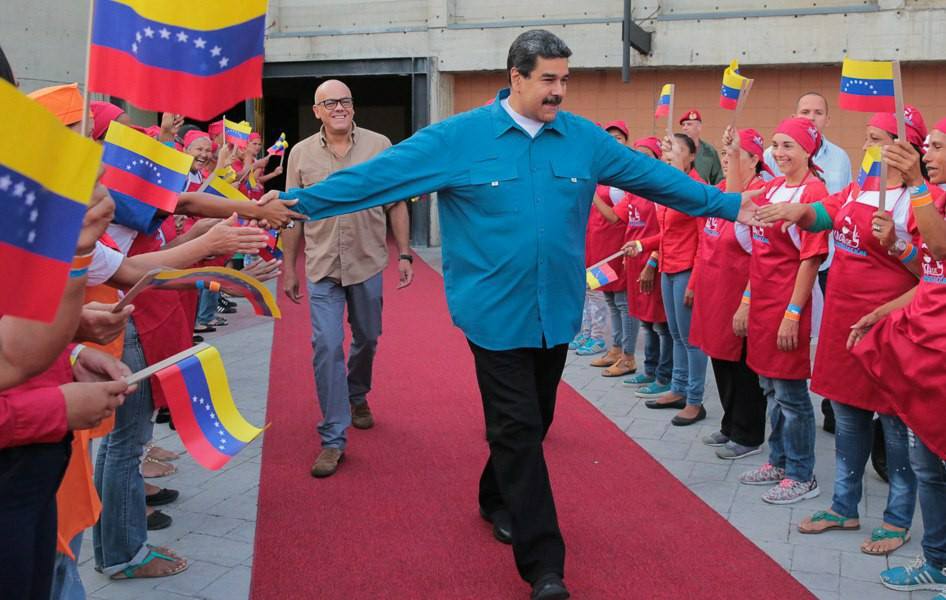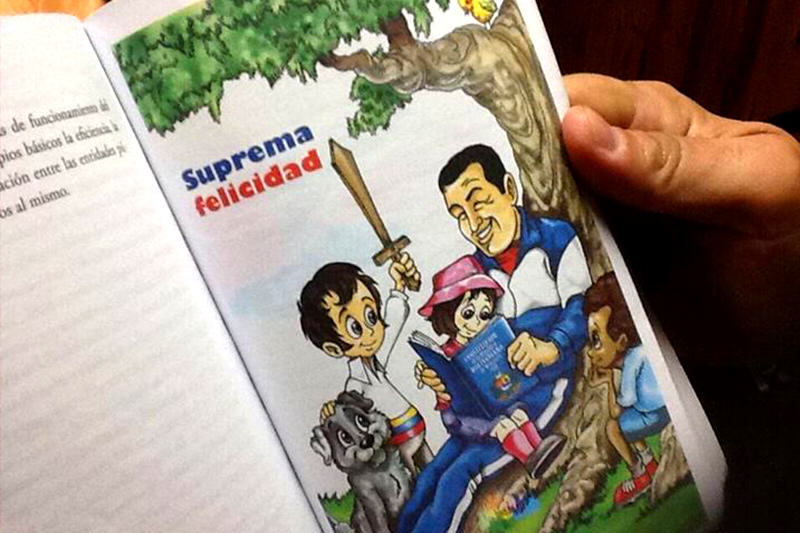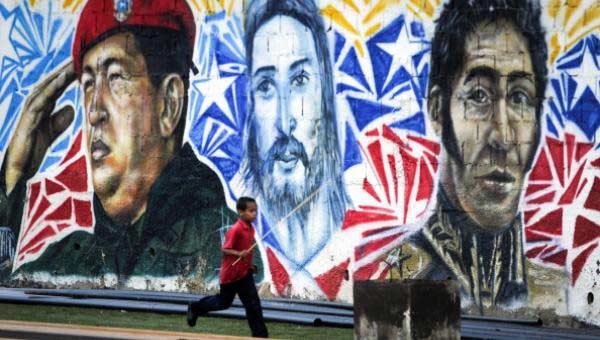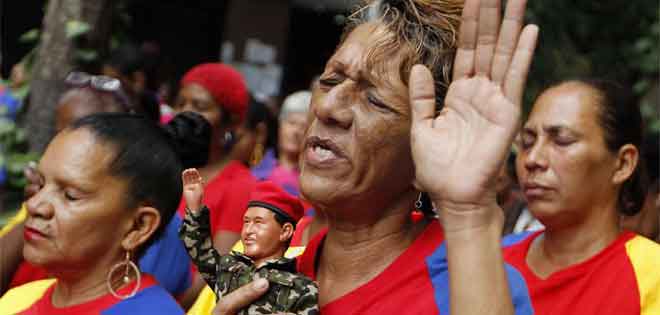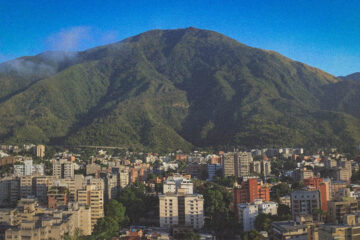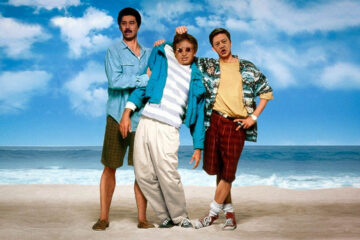During these two long, drawn out, and exhausting decades of “Revolution” in Venezuela I’ve been witness to the birth of not just this asphyxiating and draconian Socialist regime—sold to us as “XXI Century Socialism”, but also to the bizarre pseudo religion that always comes bundled with every totalitarian regime.
Creating a cult of personality around the leader has always been a primary goal for the Venezuelan regime; it is in their best interests to elevate the leader to near deity heights, with their politburo or “vanguard” forming a lesser pantheon of chosen prophets that act as the leader’s voice and will.
It is through them, and only though them that you—the people, will be able to solve the country’s problems (even though they’re the ones that caused them in the first place). Be it by weaponizing the hunger and starvation that they themselves have caused, or by availing themselves of the hopelessness and despair of those most impoverished, presenting false glimmers of hope and aid in the form some of mere breadcrumbs, they often exploit the religious nature of our country’s citizens; the end result is a neo-religion that helps further cement their rule in the country’s psyche whilst keeping the catastrophe going on and presenting themselves as the only solution.
They break your legs and then demand obedience when they give you a pair of crutches.
While we’re not yet at North Korean levels of fanaticism and mandatory devotion, we sure are on that path, but as with most things with this regime, it all began with the upmost of subtlety—always with a charismatic visage that masks perverse intentions.
What we have right now is a pseudo socialist religion. A Father in the form of Hugo Chavez, as the Eternal and Supreme Commander of it all, who, inspired by the Holy Spirit of Simon Bolivar, has freed us from the shackles of Capitalism; a man that didn’t died—but has merely “multiplied” in each and every citizen.
His work is now continued by his chosen son, Nicolas Maduro, who according to The Father’s last mandate, is the only one that can defend The Father’s “legacy”, namely, the Revolution, and lead us to his one true path: Socialism, and we cannot forget the Apostles in the form of the politburo, comprised of the same cabal that has swapped positions of power with one another ad nauseam. With Chavez’s military background as a crucial backbone of its organizational chart and as a fundamental disciplinary pillar.
This bizarre blend of military doctrine, authoritarianism, Marxist ideology, and quasi-religion is largely attributed to one problem that we have down here in South America, we’re very susceptible to messianic figures that overflow with charisma, a wolf in sheep’s clothing who is “just like us” and talks just like that too—and then before you realize it they’ve seized it all and have perpetuated themselves in power; time and time again it has happened, continues to happen, and I’m afraid that it will happen once again in the future.
Time is a flat circle indeed.
The Comrade President
This whole thing started circa 2006-2008, right after Chavez’s second term began (or third if you count the short period before the Republic was restarted as the Fifth Venezuelan Republic) and what was at the time his last term before he amended the constitution to perpetuate his rule—now we know that he had other plans in mind.
Government officials, from mayors to governors, even congressmen, started to subtly refer to Hugo Chavez as the “Comrade President” throughout the media and in official events; this practice was criticized by many media figureheads and politicians during that time because of what it implied and it was vehemently defended by those who supported Chavez as well as the state media—we should’ve heed it as a terrible warning, for it was a sign of things to come.
The political “bases” and those most radically loyal to Chavez’s rule spread the title to the masses, and thus it was cemented in their minds that Chavez was not just the president anymore, but the Commander President of the Revolution, implanting the notion that he was above mere men.
The insertion of the Comrade President moniker in the revolutionary lexicon began during the time Chavez (and by extension, the government and the media under their control), began to refer to the United States as the “Empire” in a more open manner, joining Cuba in their now shared narrative: that the “Empire” is waging a war against the poor and defenseless Venezuelan people, and them and only them are the ones that can “lead the fight” and “protect us” from the Empire and all of their nefarious and mischievous deeds against Venezuela and its people.
After all, every religion needs a great satan, and every hero needs a villain (Bellerophon and the Chimera, Batman and The Joker, Odin and the Giants, etc) The Evil American Empire has been the villainous figure in the Communist Cuban Dogma, and it has been over a decade since the Venezuelan regime placed them into the same role.
In addition to that, Chavez then merged his Fifth Republic Movement party with other lesser parties and organizations that had supported him for the past near-decade; merging them all into the “Partido Socialista Unido de Venezuela” (United Socialist Party of Venezuela), creating the massive behemoth that now has absolute control over every aspect of the nation.
The regime rallied around Hugo Chavez’s new battle cry: “Patria, Socialismo, o Muerte” (Fatherland, Socialism, or Death).
Official government memos and notes still begin with a “Bolivarian, Revolutionary, Anti-imperialist, Socialist and Chavista” salutation, and tend to close up with a similar flair, all was well for the regime as it shifted its pieces towards consolidating their XXI Century Socialism in Venezuela.
The notion that the Revolution could not function without Chavez was mandatory among those loyal to the Socialist Party and the government, an achievement of the glorification of the Comrade President; Hugo Chavez was the Revolution itself, he was vital to it—indispensable and necessary, there was no room for other leaders, he made sure of that, for he was the one and only leader of the cult.
After Chavez publicly admitted that he had been diagnosed with cancer in 2011 (to this date there’s no official records that show what type of cancer he had, what type of treatments he received or even his cause of death, although speculation often points to it being a form of sarcoma), his “Death invoking motto” was replaced by “Independencia y Patria Socialista, viviremos y venceremos” (Independence and Socialist Fatherland, we will live and we shall overcome), and the government’s cult of personality of Chavez’s figure adopted a less conflictive and more religious tone, one mostly bathed in Christianity—despite the fact that they had waged a war with the Venezuelan episcopacy in ages past.
The man that once said he did not believed in God at the height of his power (and oil bonanza) back in 2008 was now openly kissing a crucifix and begging for his life, imploring his followers to pray for him.
His 2012 Presidential campaign had the usual socialist messages, but unlike in previous opportunities, religion took a front row, his understandable desperation with his cancer made him publicly plea to Jesus Christ himself in April 2012, asking him “not to take him away just yet” for he had “still things to do”
I do understand his rediscovery of religion and respect it if it was actually genuine despite all that he’s wrought upon this country; cancer does that to you, and I know what it’s like—prayer is all that we had at the end of my mother’s fight with cancer, it is what helps you find respite every night, no matter how little.
But it is what came after his death that further twisted religion and Venezuelan spirituality in the name of socialism and this regime.
The Supreme and Eternal Commander of the Revolution
This is when things took a turn for the worst, when the cult of personality was taken a step further, and one step closer to being a quasi-religion built around the late Hugo Chavez.
After his death on March 2013 (or December 2012 according to some rumors, we’ll never know for sure now), Chavez was elevated to a demi-deity like status, he was immediately referred to as the “Eternal and Supreme Commander” of the Revolution, and was named the Eternal President of the Socialist Party—any similitude with North Korea is merely coincidental.
His funeral was a modern version of Lenin’s, his body was paraded and displayed for a few days, the country was paralyzed, no one knew what to do—or expect, except his inner circle; but the religious and ideological devotion to Chavez paid off for the regime, thousands flocked to see him one last time.
All that ideological nonsense that they infected citizens with throughout the years was left in evidence during those days.
His body was entombed in the Temple of Light—I mean, the “Cuartel de la Montaña”.
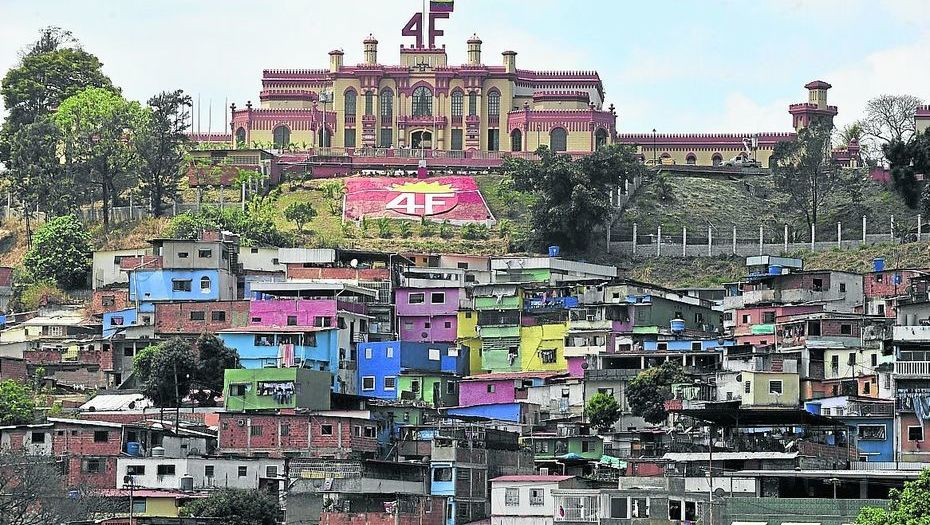
The juxtaposition of his grandiose temple on top of the shanty houses is this socialist revolution in a nutshell, the mighty and all-controlling government, ever so grandiose and pristine, sits atop the impoverished people that they had once swore to serve; if one picture encompasses the absolute state of Venezuela and its socialist regime it’s this one.
This once military headquarters and museum was the place Chavez had seized during his military coup back in 1992—and the place where he surrendered when the coup failed; it became his resting place, and a monument to all things Chavez—a museum of him if you will. Constant pilgrimage to this sacred place is expected if you’re a true believer of the Supreme and Eternal Commander’s Socialist Revolution.
The place was quickly revamped, and transformed into his personal temple, his body rests forever guarded by soldiers, every day at exactly 04:25pm a salvo is fired, for that is the time that according to the politburo the Supreme Commander departed this world.
As part of the usual marxist rhetoric, according to them Chavez did not die, he has simply “sown” and multiplied in each and every one of us, its the same terminology used by Cuba when Fidel Castro died, and one that many socialist/communists love to employ.
We are now him, and he is now us.
And thus this bizarre cult had obtained its central deity figure of power.
I honestly wonder if there’s three special relics that I can bring to that tomb, and play his beloved “Patria Querida” song with a magical red ocarina.
Will the wall open to reveal the location of Bolivar’s original sabre? You know, the one they’ve seized for themselves.
Will something else happen if you play that special song with the special relics in place?
Guess I’ll never know…
With Chavez immortalized as the Supreme and Eternal Commander, the socialist party’s politburo weaponized his devotion as a substitute for the charisma and eloquence Chavez had that earned him the admiration of his followers in life.
The “Legacy” of Chavez has to be protected at all costs, the bad guys want to take it al away, and it’s up to them, the apostles of Chavez, to continue his work. That more or less is the politburo’s narrative.
Chavez made his last public TV appearance on December 08, 2012, it was his farewell to the nation before going to Cuba for a medical procedure related to his cancer treatment. In it, he pleaded his followers to vote for Maduro should something happen to him.
The government has decreed every December 08 as the “day of loyalty and love” to the supreme commander, it is now a special and sacrosanct holiday, one that’s celebrated alongside the most important dates in Chavez’s career: The rise to power of the revolution in Feb 02, his failed coup attempt on February 04, the failed coup against him in April 11-13, His birthday and death, and so on.
These are all but official holidays here now.
In one of the most embarrassing and bizarre displays of sycophancy, many of the official government acts that commemorate their Supreme Commander (which are often mandatory broadcasts), have weird semi-transparent overlays of Chavez himself, often in the skies, as if he’s looking down on you from heaven.
You know, like those anime shows where the main characters look at the sky and their missing buddy is there, smiling at them from the heavens, same thing.
Don’t believe me? Well here’s an example of one of the earliest ones:
They’ve eased up a little on this practice but still do it oftenly. I think they realized how cringy it all looks so they’ve tried different approaches.
And from there the mystification of Chavez’s figure continues to rage on, five years after his death his voice is now sacred gospel, his statements are empirical truth, his old tv show is biblical evangelism (yes, even the diarrhea episode, no I’m not making this one up, Chavez once talked about his diarrhea on national tv).
Around four years ago, the Socialist Party twisted the Lord’s Prayer and made a Chavez version of it, the backlash was quite intense.
The socialist plan he redacted for 2013-2019? That’s their sacred scripture now, they’ve faithfully followed it and now look at the results; its up to their apostles to write the next one for 2019-2015.
Even the armed forces have replaced their flag with the Supreme Commander, it serves as a reminder of who they truly serve in the end.
The Symbols
It wouldn’t be a religion without some symbols, right? Christianity wouldn’t be the same without the cross, Judaism wouldn’t be the same without the Star of David, and Chavismo wouldn’t be the same without theirs.
You cannot be a true believer of Bolivarian Socialism without some official Chavismo swag, you cannot claim to be a ardent defender of Chavez’s Legacy™ without some official merchandise.
Without further ado, here’s some of the symbols of this pseudo-religion:
The Eyes
The Eyes of Chavez have become a modern take on the infamous Che Guevara portrait; spawned out of a clever marketing campaign for the 2012 presidential election, the eyes are now emblazoned everywhere, from the Socialist Party’s ballot, to buildings, streets, walls, everywhere.
An eternal reminder that he is watching you, for his gaze sees all, every move, every action taken—and yes, he sees you when you touch yourself.
The Signature
The Supreme and Eternal Commander’s signature serves a similar function to his eyes, but more akin to a seal of approval or endorsement.
Following Chavez’s death in 2013 the Government launched a campaign to tattoo the signature on people’s bodies for free.
Now imagine this scenario, you’re super thirsty for this hot chick, you finally slid into her DMs, a few dates later and here you are, ready to motorboat them titties with the force of a thousand horses when she takes off her top and you see this:
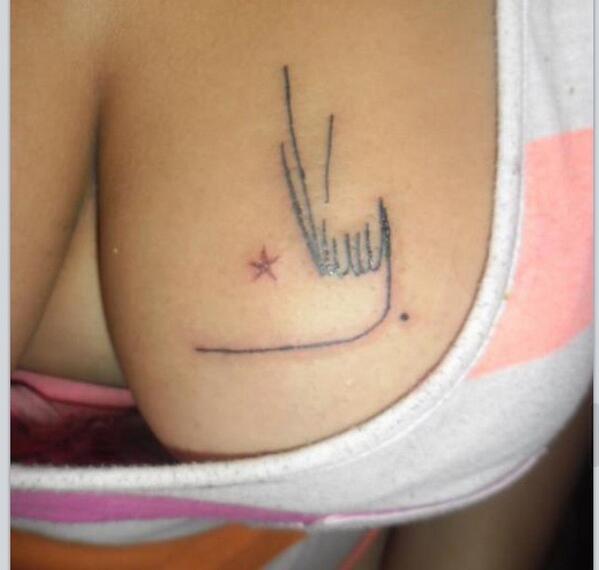
What would you do?
The Beret
The very first unique symbol of this so-called Revolution and one that has its origins on Chavez’s military background, it was the principal symbol of the now extinct fifth Republic Movement.
Following Chavez’s death, its use has been severely reduced, but you can still find true adepts of the Chavista religion wearing them with pride.
The 4F
This one is more of an accessory icon plastered on top of others, a logo that commemorates Chavez’s failed coup attempt that took place on February 04, 1992.
The Cap
The origin of this one has its own fair share of controversy.
The government claims that the cap is and has always been theirs, they attribute its creation to a middle-class group that supports the government, ironically the government has nearly extinguished the middle class now, go figure.
For what is worth the government’s claim might be truthful since this group in particular has ties with certain key government figures, and has been rewarded with high positions within the government, one women in particular was given the chance to run for major in a district that the opposition has always controlled (Chacao), a useless but symbolic candidacy, her mother in turn was turned into an Consul and then Ambassador—then again, this regime has always been against the concept of meritocracy.
On the other hand, the opposition claims that this cap belongs to them, the government’s counter-argument is that the opposition merely co-opted the cap for their own use.
If that’s the truth then I guess that the opposition actually did something right for once.
The government’s solution to the cap co-opt debate? Make a “new” version. As in, just slap the 4F logo on it and call it a day.
This cap actually serves as a means to tag people by their political affiliation should they be wearing it in public by whether not theirs has the 4F logo or not.
If you want to further prove that you’re more Chavista than Chavez himself, add more stuff to your cap, slap Chavez’s signature somewhere, another logo in the back, the more allegories to chavismo the better.
The Red
Ah, yes, the quintessential color of Socialism and all things Marxist; you cannot be a true believer of the Socialist cause if at least 95.5% of your clothes aren’t red (yes, even your underwear).
Like our youth who must wear colored uniforms in public and private schools according to the stage of education they’re receiving, chavistas must embrace the red uniform.
While the Yoruba (Santeria) initiates must wear all white for their first year, a Chavista must wear red for every act, every event, every forced rally for the rest of their lives—unless you’re sporting a military uniform or an attire with a similar shade of green.
To add insult to injury, the red shirts and jackets that the politburo elite wears are often from expensive designer brands; you can’t expect them to wear a several thousand dollar watch if their clothing is not up to par, I mean, come on, really.
A pity though, because I do like red and it’s my default color when it comes to online gaming, it’s the color I wore with pride in my many online multiplayer adventures and victories, but wearing red here is a sign of Chavismo, I want my red color back.
Simon Bolivar
The big man himself, El Libertador is the very first one—the one symbol that started this all; sure, the man deserves rightful admiration, liberating all those nations was no easy task, but we overdid it and in doing so, we have run his memory to the ground, then along came Chavez and he went even further beyond.
Availing himself of the pre-existing cult of personality around Simon Bolivar Chavez rallied his ideals under the banner of “Bolivarianism”, using Bolivar’s name as a cornerstone for his cause.
“This is Bolivarian Socialism.” Chavez said in numerous occasions.
Bolivar inspired Chavez, which prompted him to seek out and become a “Second Libertador”, which is another title that the regime has subtly used from time to time. The Socialist Party refers to him as “Father Bolivar”, they have twisted his words and deeds to suit their narrative, Bolivar is now theirs.
The irony is that in “freeing us” from whatever it is that Chavez freed us from, we’re now slaves to the socialist regime that he stablished, and our currency, named after him, is beyond worthless.
They have slapped his name everywhere, from the country’s name to the armed forces, “Bolivarian” is now their adjective, their suffix for all things possible.
But the use and abuse of Simon Bolivar’s image did not stop with their name, nope, they went even further, he is after all, the center figure of Venezuela’s very first cult of personality.
Following an exhumation of his tomb at the start of the current decade, the government commissioned a CGI reconstruction of his face, the result is an uncanny valley portrait that is quite different from the traditional paintings and depictions of Bolivar.
One would say they wanted to change his facial features so he’d loosely resemble Chavez himself, in an attempt to further validate their credence that Chavez is the “Second Libertador”
For the sake of comparison, here’s a portrait of Bolivar made by Peruvian painter JoséGil de Castro in ca. 1823, which according to Bolivar’s own words, has “the greatest accuracy and resemblance.”
The Son of Chavez
Because of course, this tragedy had to have a sequel. Following Chavez’s death and Nicolas Maduro’s subsequent rise to power, he was immediately christened as the “Son of Chavez” for he had been chosen by the Supreme Commander himself to lead the country towards the fabled Socialist utopia.
During the first couple years of his now seemingly eternal presidency he depended upon the symbols and deification of Chavez to try and connect with the people; he tried to emulate Chavez’s persona in every possible way, down to the clothing and hand gestures, heck, he would’ve gotten the same wart Chavez had in his face if it helped him boost his charisma.
But you just can’t copy a charismatic person when you don’t even have half of the that person’s charisma. This desperate need to emulate the Supreme Commander and depend on his deity status is what led to incidents like the bird that may or may have not been Hugo Chavez, or the infamous “capuskicapubul” (Google that)
Nowadays he is now referred to as the “Worker President”, the “Driver of Victories” and a bunch of other made-up titles, what he lacks in charisma when compared to Chavez is overcompensated with overly expensive media campaigns and artificially inflated social media reach.
Whereas Chavez was content with just TV and radio broadcasts, Maduro has taken his to the internet—despite us having one of the worst speeds in the world, often streaming his appearances through Periscope and Facebook Live, as well as adopting Chavez’s former Sunday tv/radio show format into one of his own.
He even has his own Salsa show on radio, where he sings and dances while the country starves and dies.
Maduro has availed himself of a myriad media campaigns and countless ads in order to present himself as an exalted figure that’s almost as important as Chavez but not quite (since no one can stand above the Supreme and Eternal Commander), they range from laughable, absurd, to utter cringeworthy, it’s a hodgepodge of several marketing firms, and it shows
These ads also pretend to lie to the country and to the world, saying that everything is fine here, it creates a sickening contrast between their fiction and the actual reality; no matter how hard you try, you just can’t hide what’s happening, it doesn’t matter if you put a pretty face around typography, it doesn’t matter if you use clips from the Big Bang Theory and Rick & Morty (yes, they’ve done that), the reality is that they’ve made irreparable damage to this nation and its citizens.
Maduro has not been shy of getting symbols of his own, but its not easy for a man that lacks personality and charisma.
The first one came in the form of his most evident feature (besides his ever expanding belly): His mustache.
Too far gone.
Obviously (and thankfully), this one didn’t quite meet their expectations, and was slowly phased away, it still used but its not something that’s actively pushed, after all, nothing can replace the symbols and imagery stablished by the Supreme Commander himself.
The second one stems from his origins as a bus driver, he sure loves to drive them buses while people cheer and clamor for him (or throw him some mangos).
For the past sham elections’ presidential campaign, his imagery used less intense colors in an attempt to present himself more amiable, he opted to favor other types of colors for his shirts besides the traditional red; in an attempt to distance themselves from the disastrous previous administration.
Yes, you gotta vote for him so he can fix the mistakes the previous administration (aka him) caused.
His pursuit of finding his own identity away from Chavez’s continues through constant trial and error, but not without forsaking the ideological tactics and methodology that cemented Chavez’s cult of personality; he may have started to wear different colors and finding his own eloquence, but the ideological end goal remains the same: To perpetuate a cult of personality around his status as “The Son of Chavez” and thus perpetuate himself in power.
Ideology and children
One of the most dangerous things of nearly two decades of a forced cult of personality is the fact that the regime has total control of the public education system, thus, with that powerful card in their hands they’ve inserted their indoctrination right on the children’s academic curriculum.
That power has allowed them to rewrite history as they see fit, telling their tale as the absolute truth and shoving their ideology straight through the minds of the children.
They’re the ones who now dictate what is the “Right side of history” in this country, history after all, is written by the victors, and now that they have absolute power and control they can and will continue to morph the tale and turn it into theirs.
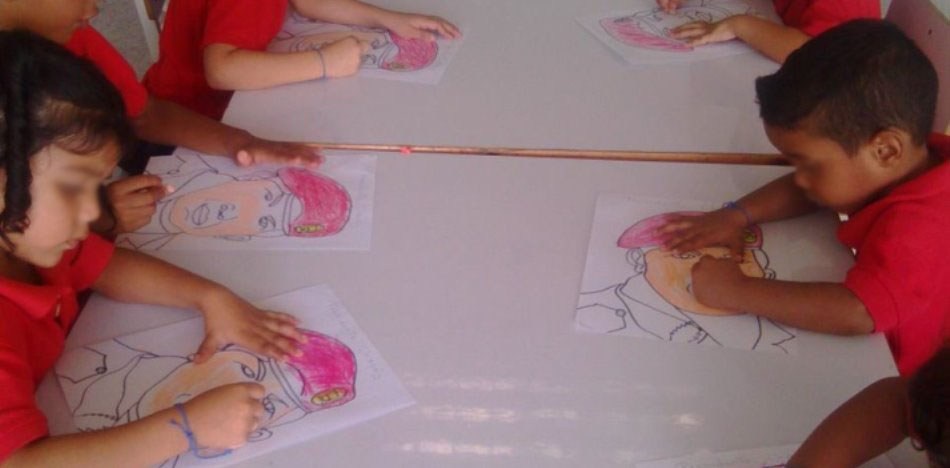
Venezuelan children are being taught to cherish and love the Supreme commander and the Worker-President at such an early age, this draws a dangerous parallel to the Cuban regime; make them love the Supreme Commander at such an early age, make them despise the “Evil Empire” make them hate capitalism and embrace socialism before their puberty has started and you’ll have a brand new generation of obedient and subservient pawns for your socialist revolution.
The children of this nation do not deserve such a terrible fate.
